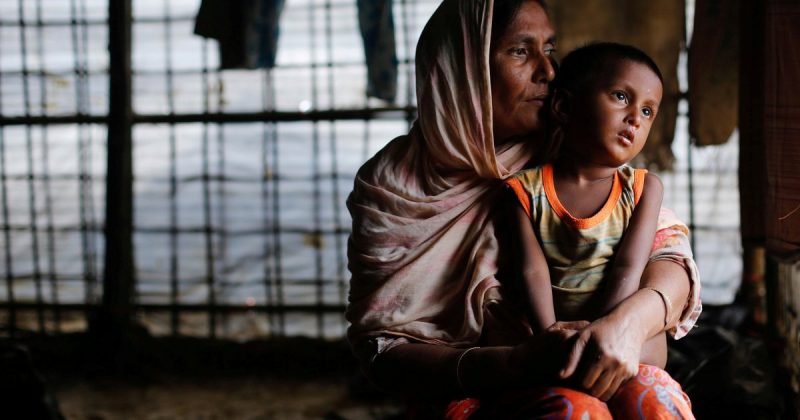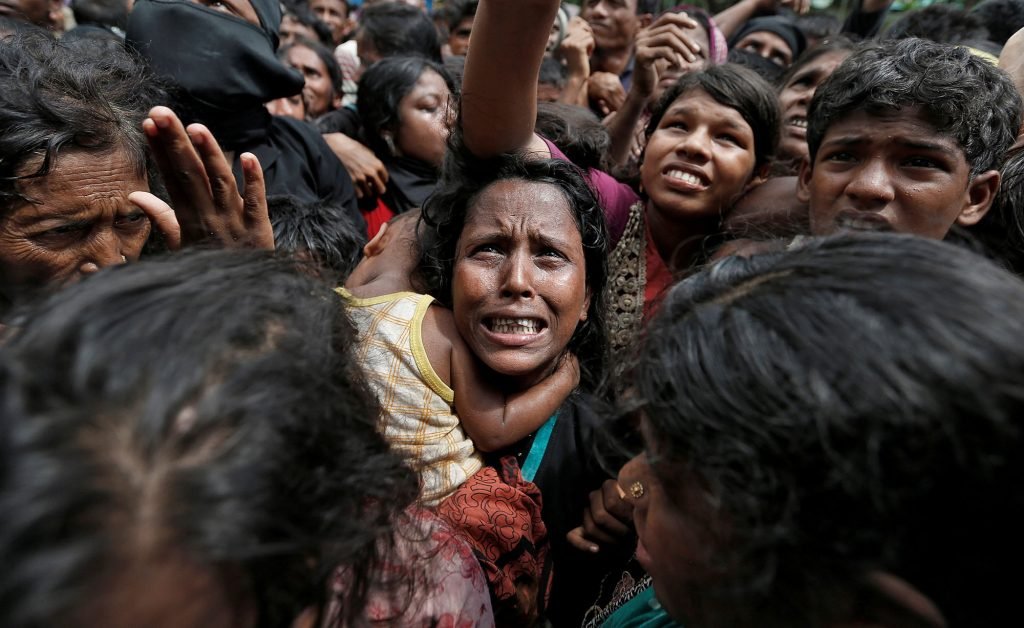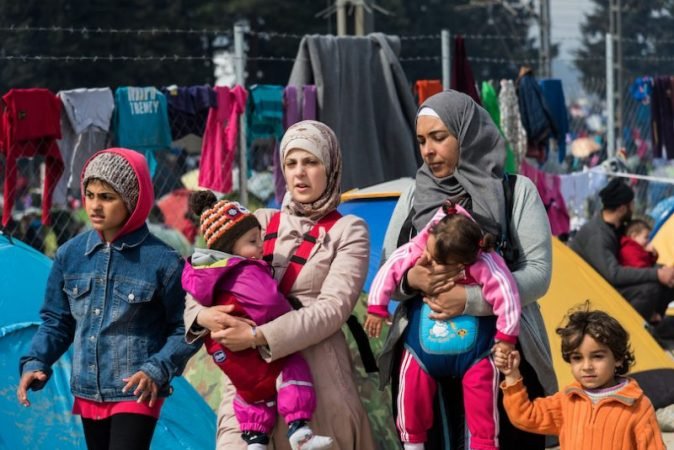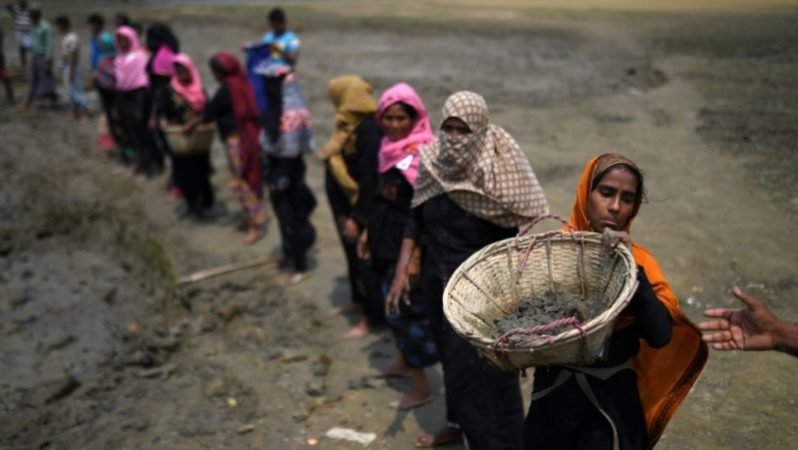Gender and migration

“When things fall apart, the children of the land scurry and scatter like birds escaping a burning sky”.
– NoViolet Bulawayo (Zimbabwean Author)
Migration has always been considered great propulsion towards the evolution and growth of human development. As the world is coming more multipolar with passing time, the word migration has evolved from a simple word to a word with various dimensions to it. There is no specific definition to what migration is but as put into words by the beautiful quote, migration alludes to the people leaving their home country and resettling in a foreign country. This movement can be the outturn of many underlying causes like lack of education, war, internal conflicts, lack of proper medical care and it can also be voluntary where an individual, moves to another country for a better lifestyle. Migration is not a new term but if we look back at the history of the world, Africans were the first to move out and colonize other parts of the world and therefore it is said that the history of the world is the history of migration. Therefore, it has always been the part of our history but whenever people talked about migration, “Men” were the first to be taken into consideration. Gender never played an important role because it was a common conjecture that women are supposed to stay home and take care of the family and men are to move out and earn. But with passing time, gender has become the centre of discussion and therefore understanding the complexities of gender and migration is very significant. The World survey on the role of women in development clearly put forth the importance of women migration on the overall international migration. It is very crucial to understand whether gender inequality is the pretext of women migrating to other countries or migration itself aids to sustain gender incongruity. We live in a society where gender is central to everything we do and therefore I will be focusing on what role do women play in migration and how gender inequality plays an important role in migration.
We are all aware that migration is not gender-neutral and there are various contradictions in the migration patterns that have been the topic of study for many scholars. Half of the individuals that migrate are women and two of the main reasons for which are better social environment and economic opportunities in relation to gender inequality. One major example of this is the discrimination in the global labour market based on gender that has compelled women to migrate to the North (Baudassé and Bazillier, 2013). It is often believed that women migrate because males migrate and the reason women migrating is that their husbands, brothers or fathers have taken residence in another country, and they have following them to reunite with the family. In the recent time, the female labour migrant has relatively increased, (Jolly and Reeves, 2005), and therefore a lot of times women migration is only discussed on the economic level and very limited attention is paid to the fact that women are often discriminated on the basis of gender and are in the influence of male dominance which might be the reason of their migration. Women in their country are often discriminated even in their families and society which are often forced to migrate to a country where they have their freedom and are treated equally. Even though in the past few years’ women have migrated independently, not much attention is paid to their migration because it is believed that they migrate to serve rich families leaving behind their own to be cared by someone else in their family (Asis, 2003). Women and males face different challenges and opportunities during the journey of their migration but it is often neglected how women are discriminated and treated unequally.

According to the data available, women are no more migrating to reunite with their husbands, fathers or brothers but are doing so independently (UNDESA, 2013). India is a valid example of this, “independent” migration of the women as they are given an opportunity to work in the textile, manufacturing, and garment industries in India (Shanthi, 2006). As I mentioned in my paper earlier, migration is not gender-neutral this is because women and men face different challenges and opportunities. If we keep the economic factors related to migration aside and focus on the social aspects, there are three main factors on which the migration of women depends upon. The first is personal factors like the area they live in, their age, their status in the family, education etc. The other factor is family and the third is the social factors like reasons that motivate them to migrate or the things that force them to migrate for a good life. Migration has different effects on both men and women and an example is when a woman is married and has children her probability of migration reduces which is totally opposite in the case of males (Kanaiaupuni, 2000). Education is also a crucial factor between men and women: the men who are educated are seen not to migrate and women who are educated are observed to migrate more.
Discrimination in the social institutions against women in their home country has always been overlooked. This bias on the basis on gender is also a motivating factor for women to break free from his discrimination and move to another country. In many countries women are still forced to marry at a very early age, do not have the freedom to study and constantly live under male dominance and therefore they prefer to migrate. The willingness and the ability of women to migrate depend upon various factors. Even though the reason a woman wants to migrate is the discrimination against her, this can also be the cause that eventually stops her from migrating. Women that have been facing discrimination and are under male dominance, limit their freedom and ability to move. For example, if a girl is married at a very early age and is unable to complete her education, she is dependent on her husband. This indeed severely curbs her ability to make her own decisions and be independent enough to migrate. The social-economic vulnerability of women then lies with her husband. It is very evident that the migration of women and the discrimination in the social institutions in their own country is also a reason that contributes to women migrating. The social institutions do not have the same effect on men as they do on women and one of the major reasons for that is that men do not live under any kind of dominance, and they have the ability as well as the freedom to decide if they want to migrate. The process of migration is a never-ending process and does not remain constant.

The development of women during her migration journey has both negative and positive effects. These effects depend upon the social, economic and political aspects of the host country as well as the own country. Even though both men and women face various opportunities and challenges during their migration journey, women are more vulnerable. This vulnerability exists because of the socio-economic factors in the society (Brownmiller, 1975; Millet, 1971; Nerenberg, 2002). Since women have also been dominated by the male, it eventually hinders their ability to take up an opportunity and use it for their growth. Women in their journey of migration may face discrimination, sexual harassment, poor living conditions etc. Sometimes girls who migrate at an early age get involved in criminal activities and trafficking which is completely opposite to the life they imagined after migration. There is a relationship between women migrants and poor living conditions that cannot be overlooked. Inadequate sanitary amenities can lead to degraded health conditions (Kwankye et al., 2007).
Sometimes women migrate illegally and are often caught by the officials and are often sent to jail or forced to live in shelters that eventually have an adverse effect on their development. Migration brings to light the complications caused by their reputation of being illegal (Jolly and Reeves (2005). Since these women have obtained the status of being illegal, they are often left in isolation and are even more discriminated. Women who have migrated legally are acquainted as skilled workers, but they still face bias by the organization. Most immigrant women are eventually stipulated to do low-status jobs with less salary even though they are qualified for superior jobs. This makes them feel less appreciated with compared to other workers. According to a report by the International Labor organization women, migrants can be less likely to get labour opportunities than male migrants. It has also been seen that women who have legally migrated and have obtained a standard level of education face language barriers (Jolly and Reeves, 2005; Piper, 2005). Separation based on gender is very conventional in the labour force. Women who migrate to look for better work opportunities are often given jobs that are termed as more, “feminine”. Some organizations sometimes prefer giving employment to female migrants thinking of them to be more pliant, unassertive, and even cheaper to some extent (Hugo 1993). Most of the domestic workers in the world are women. In countries like the United States, United Kingdom’s, Canada, Japan is especially employed for high skilled jobs like nursing. In the UK there are more female foreign doctors and nurses with regards to male doctors.
These women have migrated to a foreign land for freedom and to create their own identity but sometimes there feel even more dominated and isolated in the United States than they felt in Mexico. Even though these women faced discrimination in Mexico they still had their families and friends to support them but, in the US, they feel even more alienated and neglected by the people. The transgender migrants from Mexico hope for sexual freedom but are further alienated by their sexual identities. It has been believed that the patriarchy that exists on both the side of the border remains the same even when individuals continuously migrate and fight to bring about a change in the current social system that is biased and discriminatory in nature.

One of the primary causes why the migration of women has not been looked upon at a large scale is because of the absence of in-depth data and valid information on international migration. There are vast data gaps in the information related to regular and irregular migration. There is not much data on how social institutions affect the gender dynamics of migrants. The government should recognize and tackle discriminatory social institutions in their own country and the countries they are migrating to. The social institutes that infringe women’s rights and their choice to migrate should be tackled by the government. The main reason for the discrimination against migrant women is the result of the huge gender gap and inequality. The government should focus on this issue and develop programs to create more awareness in society. Discriminatory social institutions gravelly affect a country’s ability to comprehend the socio-economic prospects of its people and provide opportunities to women for empowerment. Women should be given the freedom to migrate independently to improve their living conditions and Jordan is an excellent example of this. In the year 2003, Jordan passed a new law, allowing women to have or renew a passport without the permission of their husbands (De Bel-Air, 2011). When women migrate to another country they desire and are ambitious for having a better life in the host country but instead, they face gendered discrimination and alienation in the society. Therefore, the government of the host country should promote community outreach programs to facilitate the integration of women migrants into society.
The female migrants should be able to work and build their life without facing any form of discrimination in society and their workplace. Social workers can create awareness and help society to understand female migration, not as a problem but as a way for women to be independent. The need of the hour is a higher public investment both in the origin country as well as the host country to solve the issue of discriminatory social institutions so that the female migrants can take full advantage of the new opportunities without any form of discrimination. The origin and host country should work side by side to obliterate the discrimination against female migrants irrespective of whether they are or are unable to migrate.
References
- Un.org. 2020. Women And International Migration. [online] Available at: <https://www.un.org/en/development/desa/population/migration/events/coordination/3/docs/P01_DAW.pdf> [Accessed 9 March 2020].
- fluery, a., 2020. Understanding Women And Migration. [online] Atina.org.rs. Available at: <http://atina.org.rs/sites/default/files/KNOMAD%20Understaning%20Women%20and%20Migration.pdf> [Accessed 9 March 2020].
- Ferrant, Tuccio, Loiseau, Loiseau, G., 2020. The Role Of Discriminatory Social Institutions In Female South-South Migration. [online] Oecd.org. Available at: <https://www.oecd.org/dev/development-gender/SIGI%20and%20Female%20Migration_final.pdf> [Accessed 9 March 2020].
- gyeke, m., 2020. Conceptualization Of Female Migrants’ Experiences Across The Lifespan MCSER Publishing, Rome-Italy. [online] Studyres.com. Available at: <https://studyres.com/doc/58347/conceptualization-of-female-migrants%E2%80%99-experiences-across-…> [Accessed 9 March 2020].
- Elizabeth Grieco Monica Boyd, E., 2020. Women And Migration: Incorporating Gender Into International Migration Theory. [online] migrationpolicy.org. Available at: <https://www.migrationpolicy.org/article/women-and-migration-incorporating-gender-international-migration-theory> [Accessed 9 March 2020].
- Castellanos, M. Bianet, and Deborah A. Boehm. “Introduction: Engendering Mexican Migration: Articulating Gender, Regions, Circuits.” Latin American Perspectives 35, no. 1 (2008): 5-15. Accessed March 9, 2020. www.jstor.org/stable/27648070.


















